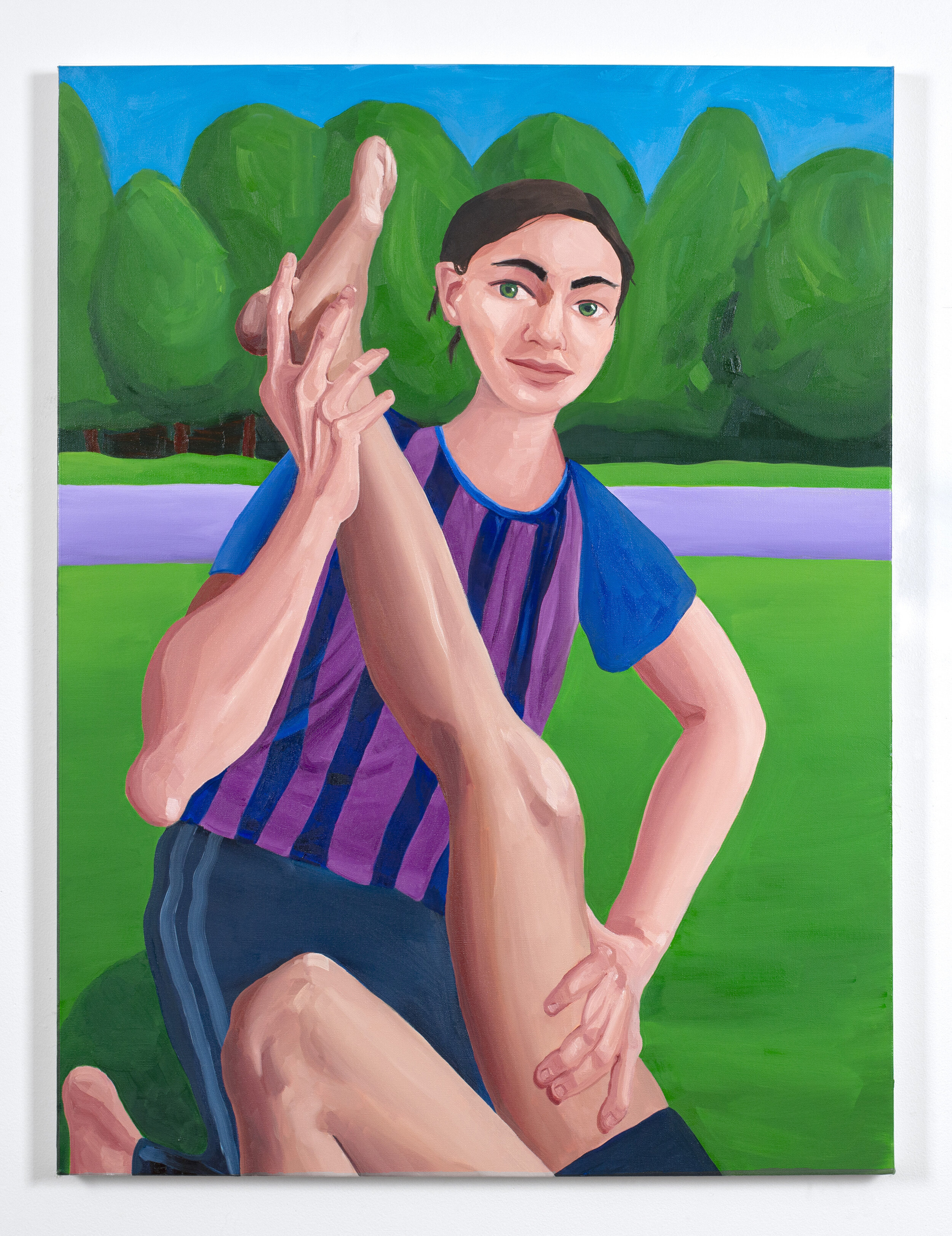Field Projects presents
Show # 121
Figuring the uncanny
Judy Chung
Judy Koo
Fay Sanders
Bob Szantyr
Reception: September, 16th, 6-8
September 16 - Oct 2, 2021
Field Projects presents Figuring the Uncanny, an exhibition of works by Judy Chung, Judy Koo, Fay Sanders, and Bob Szantyr. The uncanny occurs when the repressed psychic reality of childhood overtakes the physical mechanics of the familiar adult world. Nothing is uncannier than the “nearly” human and, for this reason, no genre expresses the uncanny better than figurative art. The works in this exhibition play with the physical boundaries of the human body, forgoing realism in favor of symbols, dreams, and fantasies. Judy Koo’s confident, Matissian paintings dissolve the boundaries between different subjectivities and corporealities. In his sculptural distortions of childhood toys, Bob Szantyr reveals the centrality of childhood, play, and the domestic realm in the workings of the uncanny. Fay Sanders playfully appropriates the primary color palettes associated with sports teams to offer a more complicated image of women’s athletics, by turns joyful and sinister. In her sugar-rush dreamscapes, Judy Chung blends the human, the animal, and the inanimate. Together, these works challenge the coherence of the human form and, inevitably, the coherence of the human consciousness. They evoke the threat—and promise—of the uncanny in the figures most familiar to us.
Judy Chung’s works are attempts to make sense of the world that we live in by exploring the dissonance between false binaries and dualities that are prevalent in ideologies both throughout history and in the immediate present. She is drawn to questions about perversion and innocence, the wielding of power, the dynamics of gender, and of good and evil. Much of the imagery Chung uses in her work is a nod towards anime/manga, video games, art history and mythology, all distorted into reimagined narratives.
Judy Koo’s work is generated through associative thought processes that traverse the everyday and the mysterious. She explores dreams and waking reveries using dark colors with hints of bright colors. Anxiety is made manifest in the dark, while the brightly lit colors contain a moment of release. Koo paints in multiple layers that build up to function as a kind of network. Different narratives emerge within the canvas, fragmented off and embedded like a palimpsest. Koo weaves fragments of such embedded stories into her painting to shape and navigate the gray area uncertainty, illuminating her own experiences of identity.
Fay Sanders is a figurative painter with a focus on portraiture. In her current series, which reappropriates Christian religious imagery, motifs from the Soviet avant garde, and footage from the Olympics, Sanders conjures a world of all-women athletics, one both recognizable and inaccessible, full of inside jokes and insularity. In these pieces, the athlete’s body becomes a tribute to its sport, a machine built for one purpose. Just as these athletes radiate both jocularity and dedication, Sanders’ paintings indicate a playful and intense relationship with the medium.
Bob Szantyr’s resin and found object sculptures use encapsulation as a means to find closure. By altering the form of the found objects, he alleviates his sense of their emotional weight or utilitarian value. The entombed toys, commemorative items, tchotchkes, and other ephemera are desktop monuments to deeply rooted memories, generational and cultural values, and the sentimental attachment to objects forged in the emotional debt of gift giving. Their figurative crystallization is both an ingenuous archival practice and an enchanting metamorphosis that contains and displays the object’s original form. In this new state, they’re ready to leave Bob’s stewardship while holding the weight of their unique history on their own.
